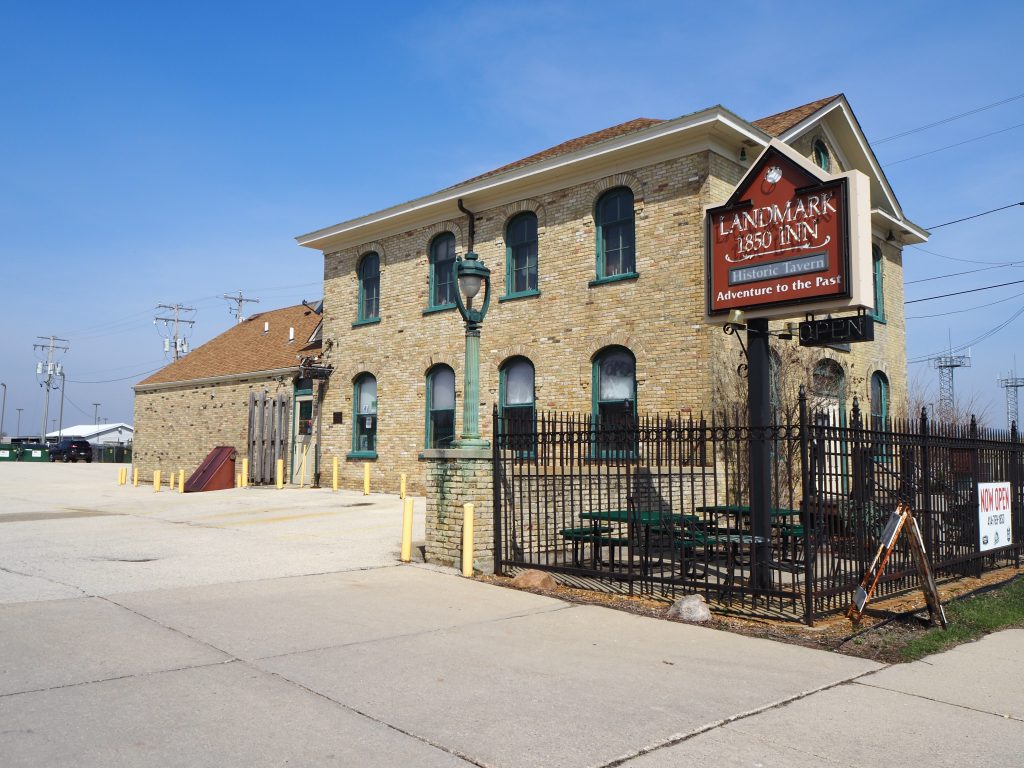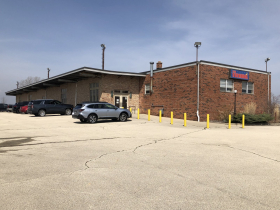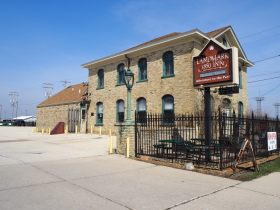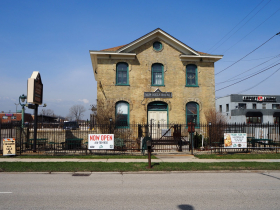Partner Sought To Reopen Milwaukee’s Oldest Bar
And you won't have to pay $5 million after buyer found for other properties.
Landmark 1850 Inn, the oldest bar in Milwaukee, could reopen if a partner or new tenant is found.
Joseph G. Halser III owned, operated and lived above the Cream City brick tavern from 1983 until his passing in 2022, when the bar closed. His family is now seeking prospective partners to reactivate that historic business.
“It seems laughable, but few people understand how much time goes into running it right,” said Halser’s son, Joseph Halser IV. All three Halser sons had worked in the bar at points alongside their father. The right partner or tenant is one that can invest the time and energy into maintaining the building, which is as old as the city itself. “It’s never been about the money for us.”
Urban Milwaukee reported that the property, 5905 S. Howell Ave., was for sale last week, but that it came with the surrounding properties and yielded a 10.6-acre potential development site across from Milwaukee Mitchell International Airport. The asking price was $5 million.
Halser said a buyer has been found and is under contract, but that the tavern property is likely to be excluded from the sale. And even if the undisclosed buyer does keep it, “they never have talked about wanting to tear it down,” he said.
The listing includes the two-story building that housed the bar, a former trucking building Halser used historic objects to repurpose into The Terminal beer garden and event venue, a wood-frame building that previously housed the Port of Hamburg bar, a garage that sits on its own parcel and lots of open land.
The elder Halser, who passed away at the age of 80, was a teacher, inventor and entrepreneur who renovated the Cream City brick tavern into a bar that was a draw for locals and visitors alike with nearly two dozen beers on tap. His son called him a “genius,” which likely underscores his intelligence. In addition to being adept at preserving and repurposing historic artifacts, Halser held patents on audio transformers.
The bar was closed, said Halser IV, because of probate issues. His father passed unexpectedly during a hospital stay. The family has also needed time to grieve. “It’s hard to be in there right now,” he told Urban Milwaukee.
The elder Halser had an eye for history beyond the bar and accumulated a large collection of historical artifacts that were on display in The Terminal. The pieces, which included items from the Wisconsin Hotel, Schlitz Brewery, Plankinton Arcade, Avalon Theater, St. John’s Cathedral and Allen Bradley, were auctioned off in February.
In addition to installing pieces in The Terminal, Halser also built out the City Lounge tavern in Cudahy, 3455 E. Layton Ave. That tavern, now long under different ownership, is currently known as the Brickyard Bar & Grill. Starting in 2007, the younger Halser opened the bar after branching out from Landmark 1850. It was the first marketed smoke-free bar in the Milwaukee area, opening three years before the ban went into effect.
Interested individuals can email Halser at mtnjoeiv@gmail.com.
And How Old Is The Bar?
The exact date of the tavern’s construction depends on which source you trust. Halser, as indicated by the bar’s name, favored 1850, four years after the city was founded. The authors of the 2021 book “Germans in Milwaukee,” Jill Florence Lackey and Rick Petrie, suggest the late 1840s. A National Register of Historic Places nomination from 1987 estimates a date between 1862 and 1869 based on the building style and a search of other records.
The younger Halser said his dad had plenty of evidence to support his date, including information provided by family members of some of the early owners and dating various materials found throughout the Italianate building. But that’s not the only thing found in the walls. There is also a massive former bee hive in one of the walls where an addition once was attached. “If you drill any holes in that wall, you can still smell honey,” he said.
The city’s official account, submitted as part of the national register nomination that Halser said he worked to initiate shortly after starting at the bar, is less conclusive.
“An exhaustive search of the deeds, tax records, mortgages, old maps, newspaper accounts and published histories failed to provide a definitive construction date,” wrote nomination preparer Les Vollmert of the Department of City Development. “Two buildings are known to have stood on the site by 1858, but it is impossible to know for sure if they included the present structure or included earlier buildings.”
There is agreement that it was known as the New Coeln House, a reference to the since-annexed Village of New Coeln where it was built. Multiple historical accounts note that the structure, a central hub in the German farming community, played host to those making the journey on horse or early automobile between Milwaukee and Racine. Later guests included those making use of the airport or traveling through town, including professional wrestlers.
The tavern has also been known as Deuster’s Saloon and has had a series of additions that were constructed and removed.
The family has ties to another historic structure with an uncertain future. Halser’s grandfather operated a tavern and rooming house in the Historic Third Ward at 266-272 E. Erie St., later known for the Wreck Room saloon, and the subject of a current historic preservation battle.
Photos
If you think stories like this are important, become a member of Urban Milwaukee and help support real, independent journalism. Plus you get some cool added benefits.

























